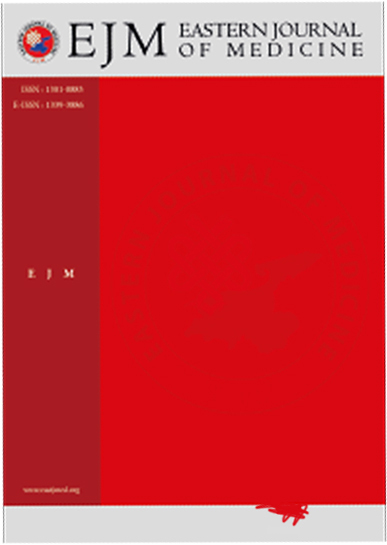Gastrointestinal and Biochemical Characteristics in Dyspeptic Patients with Anaphylaxis: A Comparative Study
Sefer Aslan1, Ersin Kuloğlu1, Ali Muhtaroğlu2, Kubilay İşsever1, Gökhan Aydın3, Eray Beşirli1, Ahmet Cumhur Dülger31Department Of Internal Medicine, Giresun University Faculty Of Medicine, Giresun, Turkey2Department Of General Surgery, Giresun University Faculty Of Medicine, Giresun, Turkey
3Department Of Gastroenterology, Giresun University Faculty Of Medicine, Giresun, Turkey
INTRODUCTION: The objective of this study was to evaluate the gastrointestinal and biochemical characteristics of dyspeptic patients with documented drug allergies in comparison to a control group of dyspeptic patients without drug allergies.
METHODS: A total of 122 patients presenting with dyspeptic symptoms and documented drug allergies, who were referred to gastroenterology outpatient clinics from internal medicine and general surgery outpatient clinics, were included in the analysis. A control group of 100 dyspeptic patients without drug allergies was also included for comparison. The demographic data, blood haemogram, biochemical parameters, and gastric antrum biopsy results (Helicobacter pylori, intestinal metaplasia, atrophy) were collected and subjected to analysis. Statistical comparisons were conducted between the anaphylaxis group and the control group, as well as within the anaphylaxis group itself.
RESULTS: The study included 122 patients with drug allergies (73.8% female, mean age 53.12±15.73 years) and 100 controls. No significant differences were identified in the prevalence of Helicobacter pylori, metaplasia, or atrophy across different allergy types. However, patients with a cephalosporin allergy exhibited significantly elevated calcium levels in comparison to individuals with other allergy types (p<0.05). In comparison to the control group, the anaphylaxis group was characterised by a higher proportion of females, a lower mean age, and higher leukocyte and lymphocyte values.
DISCUSSION AND CONCLUSION: It can be concluded that dyspeptic patients with drug-induced anaphylaxis exhibit distinct gastrointestinal and biochemical characteristics in comparison to those without drug allergies. These findings emphasise the necessity for tailored clinical management and further research into the underlying mechanisms driving these differences.
Manuscript Language: English














